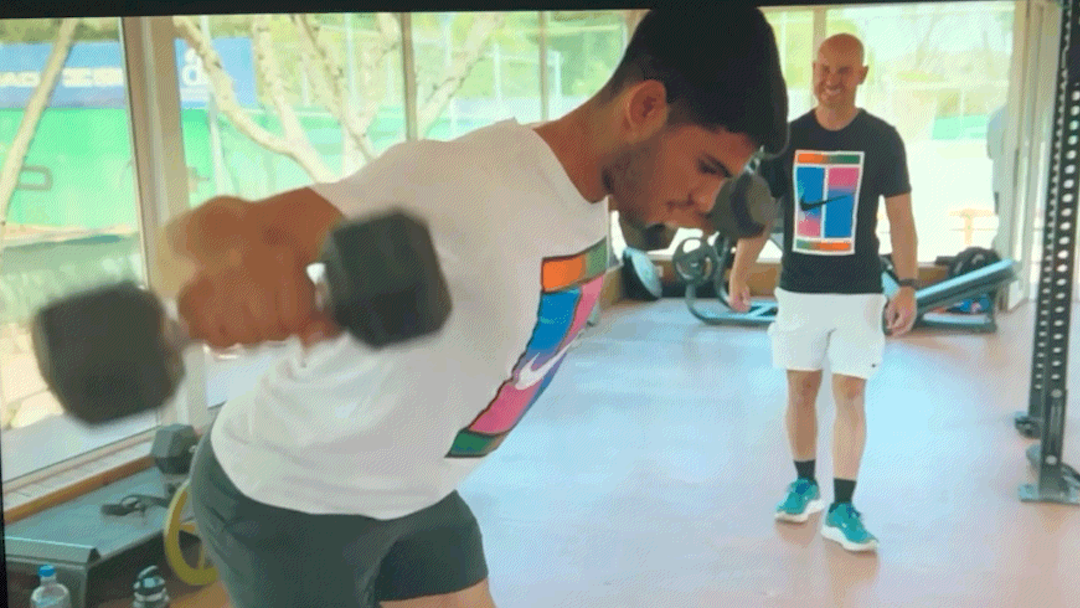Today’s training technique was gleaned from the new Netflix docuseries “Carlos Alcaraz: My Way.” Throughout this series, I have asserted that recreational players can leverage the same techniques used by the pros to improve their on-court performance. The exercise featured today is one that I have previously written about on the site. It provides a rare opportunity to compare the explosive power of Alcaraz with my own decidedly less intense execution. Specifically, Alcaraz was seen using a slide board to train for clay court mobility. I also use that device for the same purpose.
It is a very brief glimpse.

Maria Sharapova once famously described her clay court mobility as a “cow on ice.” My own footwork on clay is not nearly that graceful. A few years ago, one of my doubles partners at a tournament, who is a very experienced clay court player, recommended a slide board to get used to the sensation of playing on that surface. Once I tried it, it became a staple in my training and goes into heavy rotation anytime I know I will be playing on the dirt.
There aren’t a lot of clay courts in my part of the country. While there are some in the DFW area where I permanently reside, they are the exclusive domain of private clubs. It is really expensive to properly maintain a clay court in the scorching heat and windy conditions of North Texas. When I do buy my way onto the clay courts in my area, it is usually a disappointing experience. North Texas clay doesn’t play the same as the parts of the country where clay courts are more common.
While the slide board can be used for long-duration general conditioning, I have found that it works best in shorter intervals that correspond to the average length of a point, which is 35 seconds. A pretty common training pattern for me is to use the slide board for 35 seconds and then interweave those intervals with some form of resistance training.
There are a lot of good slide board variations. Sometimes I hold a medicine ball and use the weight to simulate racquet prep and swings coming in and out of the slide. Sometimes I take the slide board out of the home gym and play catch with a stationary partner using the medicine ball. I sometimes put it in front of a wall and bounce a tennis ball off it as I slide. All of these are effective mechanisms to develop the balance and core strength required for efficient movement on clay.
For me, the slide board seems to help my tennis play. Despite not having regular access to a clay court, I managed to reach the back draw Singles finals at the Houston Clay Court Nationals on two occasions. In a Feed In Consolation through the Quarters (FICQ) draw, that is the 5th-6th match.
As far as aerobic training equipment goes, the slide board is very reasonably priced and doesn’t take up a lot of space in the home gym. When not in use, I hang mine on a hook behind the door.
The slide board torches the hips, glutes, quads, and hamstrings. In addition to tennis and the “on label” usage for ice skating, I have found that it is really effective to prepare for snow skiing as well. It might be just the thing you need to round out your tennis training or to prepare for clay court season. Alternatively, if you are looking for a way to step up your fitness for a winter ski trip, a slide board could be just the thing you need.

SPRI Slide Board (<- Sponsored Link)
Fiend At Court participates in the Amazon Associates program and receives a paid commission on any purchases made via the links in this article. Details on the disposition of proceeds are available on the “About Fiend at Court” page.



